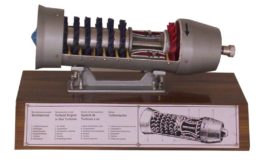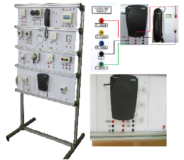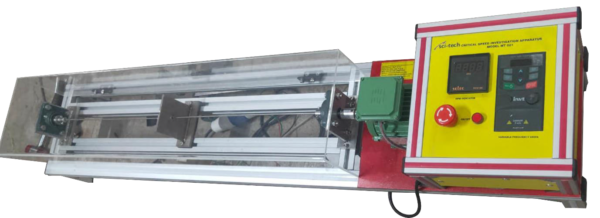Critical Speed Investigation Apparatus & Accessories Model MT 021
Home » Products » Critical Speed Investigation Apparatus & Accessories Model MT 021
Critical Speed Investigation Apparatus & Accessories Model MT 021
Sci-tech Critical Speed Investigation Apparatus Model 021 experimental unit teaches knowledge about how to determine the critical speeds. Illustrative experiments are used to explain resonance and supercritical or subcritical states of a vibrating system.
A three-phase motor drives a rotor shaft, onto which one or two masses may be fixed at various distances. The rotor shaft is mounted in two self-aligning ball bearings and connected to the motor via a flexible coupling. The electronically regulated speed can be selected via two potentiometers and is continuously variable. It is displayed on a digital readout by a revolution counter. The position and distances to elements fixed onto the rotor shaft can be read on a scale mounted in parallel to the rotor shaft.
A transparent protective cover and safety bearing immediately next to the masses attached to the rotor shaft ensure safe operation.
| Size: | 95cm x 45cm x 55cm (LxWxH) |
| Weight: | 25 kg |
Item Description
Features
* Investigation of bending vibrations in rotors1
* Determining critical speeds1
* Position of rotor mount and rotating mass can be adjusted1
* Optimal visibility and simultaneous protection thanks to transparent protective cover
At a certain speed the imbalance forces of a rotating mass can cause part of the machine or the entire machine to vibrate in resonance with bending vibrations. This speed is known as the critical speed. The rotor and shaft on a motor or a turbine, for example, form a system that can resonate. In rapidly rotating machinery this state presents a danger because it can lead to breakage and damage to the components of the system. To prevent this, the system is operated well above or below the critical speed and quickly driven through the critical speed range. Structural changes, e.g. changes to rigidity, can cause the critical speed to change, meaning the operational requirements have to be adapted.
Sci-tech Critical Speed Investigation Apparatus Model 021 experimental unit teaches knowledge about how to determine the critical speeds. Illustrative experiments are used to explain resonance and supercritical or subcritical states of a vibrating system.
A three-phase motor drives a rotor shaft, onto which one or two masses may be fixed at various distances. The rotor shaft is mounted in two self-aligning ball bearings and connected to the motor via a flexible coupling. The electronically regulated speed can be selected via two potentiometers and is continuously variable. It is displayed on a digital readout by a revolution counter. The position and distances to elements fixed onto the rotor shaft can be read on a scale mounted in parallel to the rotor shaft.
A transparent protective cover and safety bearing immediately next to the masses attached to the rotor shaft ensure safe operation.
Sci-tech Critical Speed Investigation Apparatus Model 021 accessory comes with optional measurement and evaluation software, including sensors, for data capture via PC.
The well-structured instructional material sets out the fundamentals and provides a step-by-step guide through the experiments.
See also different:

The Microwave is a term used to identify electromagnetic waves in frequency spectrum ranging from 1Ghz to infrared region. The word microwave defines itself very short waves. The shortest wave length or the highest frequencies of radio spectru [...]

Sci-tech Automotive High & Low Pressure Compressors, Turbo Jet Engine Model AM 125 is a super model of a modern two wave turbine shown in detailed construction and operating system of such a motor.

Sci-tech Telephone/Video Interphone System Trainer Model ETR 042 has been designed so that students can assemble, analyze and test a wide range of more and more complex electric circuits; it consists of interchangeable modules; thus merely con [...]

